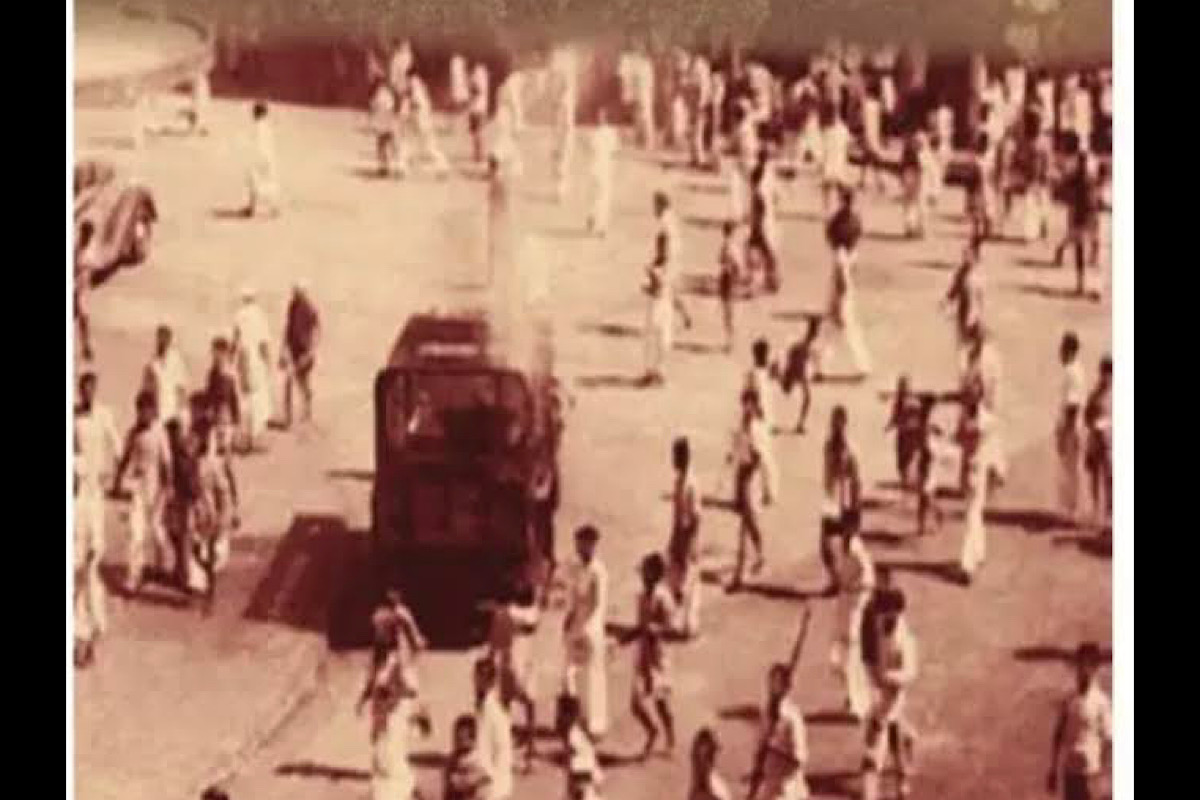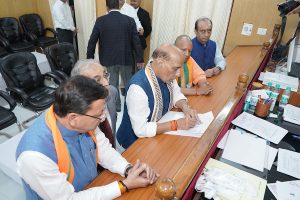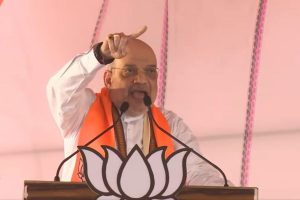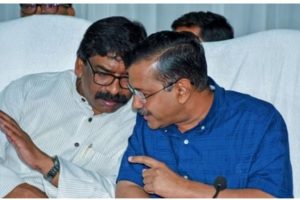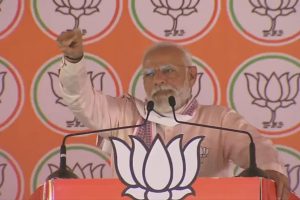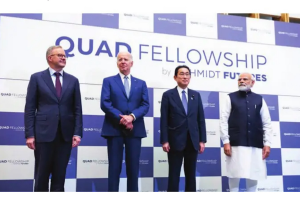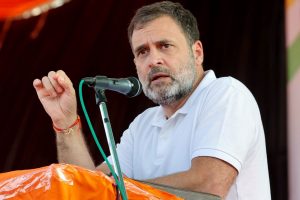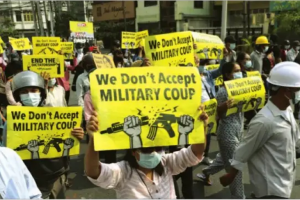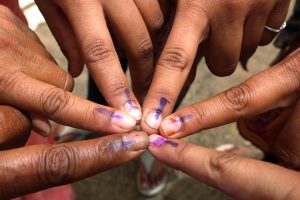Motilal Nehru mobilized his supporters as he was fully aware that Gandhi’s staunch supporters would mount a vehement opposition at the prospect of returning to constitutional and parliamentary politics. Both he and Chittaranjan Das suffered a humiliating defeat at the 1923 Gaya Congress with the latter presiding over the session. The opposition to them was led by Chakravarti Rajagopalachari popularly known as Rajaji, Sardar Vallabhai Patel and Rajendra Prasad. Within the Congress there was a division, between ‘no changers’ and ‘pro changers’, with the former wanting to stick to Gandhian ways and the latter upholding constitutional methods.
However, subsequently the pro-changers, “became powerful… as their ambition was to participate in council politics and wreck the constitution from within”. The post Chauri Chaura period saw increased tension between Hindus and Muslims in a situation where joint movement looked difficult against the British. The second problem was the challenge from younger radicals like Jawaharlal Nehru and Subhas Bose as they were impatient with gradualism and wanted complete independence and not just dominion status.
Technically, both Motilal and Das argued that their attempt was to give new direction to Gandhi’s Non-Cooperation Movement which the no-changers took as a reversal to the older and failed constitutional method. The liberals who had left the Congress earlier thought it to be a vindication of their stand. The colonial British administration was relieved that the freedom movement had swung back to the pre-Gandhian period. Even all Swarajists did not approve this policy of obstruction as both Sundara Sastri Satyamurti and Mukund Ramarao Jayakar pleaded for “responsible association” with the government.
However, there was a larger unity of Swarajists which allowed them to stick to their conviction even when Gandhi was released from jail in 1924. “The essence of the prochangers’ strategy”, according to Ravinder Kumar, “lay in capturing reformed legislatures and utilising them to put an end to British control over India’s destiny”. Openly defying Gandhi, both Motilal and Das floated their own political party, the Congress-Khilafat Swaraj Party on 31 December 1922 with Das as its leader and Motilal, Birendranath Sasmal, Vithalbhai Patel and Chaudhry Khaliquzzaman as secretaries.
Subsequently, the party came to be known as the Swaraj party with a constitution and an organization. Jawaharlal maintained his neutrality, but that helped to maintain a facade of unity within the Congress. In his presidential address on 13 October 1923, Jawaharlal said “if the Congress really represented the people, it is natural that it should attempt to go back a little to some kind of constitutional action, whenever larger numbers of people are tired of direct action”. Jawaharlal was always pragmatic throughout his political career. Motilal and Das made a renewed bid to win over the Mahatma to their viewpoint towards the middle of 1924.
However, Gandhi was deeply committed to non-violence as a philosophical truth linking its strategy and tactics to his overall view of human condition. The Swarajists felt an urgent need to bring a tactical shift after the suspension of the Non-Cooperation Movement following the Chauri Chaura incident. Gandhi was at the opposite pole. He was well aware that these widely publicised differences would weaken the nationalist movement and indirectly strengthen British rule. He worked out an agreement with Motilal and Das by which the Swarajists continued to be an integral part of the Congress with Gandhi’s stewardship as that would consolidate a united Congress.
At the 1924 Belgaum session over which he presided, Gandhi announced that there were no divisions within the party. He accorded the Swarajists “status of equality” while clarifying that he disagreed with their views. He acknowledged “the Swaraj Party represents, if not a majority, at least a strong growing minority in the Congress” and added that there was a larger conceptual unity between him and the Swarajists as they were reasonable. He initiated a process to bridge the contradictory positions of the pro-changers and the Swarajists in order to maintain a façade of unity. Gandhi’s premature and unexpected release from prison on 4 February 1924 was done with a calculated plan that he would denounce the Swarajists which did not happen as he “was less concerned with the immediate success but by its long-term implications.”.
Motilal and Das met Gandhi expecting him to be sympathetic to their plan. This wasn’t forthcoming and significantly separate statements to the press were issued. The Swarajists realized that Gandhi was keen to avoid a split in the Congress making it possible for them to return to the Congress fold if the need arose. Both groups, pointed out Bipin Chandra “were determined to avoid the disastrous experience of the 1907 split at Surat.
On the advice of Gandhiji, the two groups agreed to remain in the Congress though they would work in their separate ways”. In spite of differing perspectives, Gandhi praised the Swarajist leaders “as ablest, most experienced and honest patriots” adding that the differences were not in the essence but in details. Accommodation of the Swarajists clearly indicated that Gandhi’s Congress would be an umbrella party that would represent all shades of political opinion.
Gandhi’s retirement from politics and concentrating on constructive programmes also helped the Swarajists to act freely and legitimise their policy. However, the channels of communication were kept open and that helped both Motilal and the detractors, VJ Patel, Jayakar, Narasimha Chintaman. Kelkar and Lala Lajpat Rai. Gandhi directed the no changers not to put any obstacles in the work of the Swarajists but in spite of such a conciliatory appearance the gulf between the no changers and pro-changers was wide.
Motilal was surprised at the continued emphasis on the Punjab Question and the Khilafat which he thought had become irrelevant. He pointed out “clinging to high ideals instead of helping does positive harm as shall we weave a cobweb of casuistry around us from which it would be impossible to extricate ourselves”. Significantly he added that the council entry could not be regarded as a negation of non-cooperation but to expose the limits of parliamentary action in a colonial situation. The slugfest between Gandhi and the Swarajists took an acute turn at the Ahmedabad meeting of the AICC in June 1924.
The differences between them became clear and Motilal objected to Gandhi’s proposal that every single Congressman would spin half an hour every day and produce 2000 yards of yarn as that violated the letter and spirit of the Congress constitution. He also asserted the democratic right of individuals to vote for a person of their choice.
He forcefully pointed out that the “INC belongs as much to us as to the opposite party. We will not allow, if we can help it, the constitution to be changed according to the caprice of a narrow majority whenever it may think to crush the minority. The demand that the Swarajists should go out of the executive… is an unreasonable demand and it is only due to our self-respect that we must resist it”. Motilal, Das and their supporters took the extreme step of walking out of the Congress as a protest against Gandhi’s resolution which was carried by 57 votes to 37.
But Gandhi was shocked at the strength of the Swarajists and modified his resolution. The resolution was carried minus the clause that those who didn’t spin sufficient yarn would lose office. Gandhi recognized the support the Swarajists enjoyed within the party and regarded himself, according to S Gopal, as “defeated and humbled”.
The Swarajists did not deny the value of constructive programmes but wondered whether these would constitute effective political programmes. Since civil disobedience was ruled out for the time being, the Swarajists felt work in the legislatures would be the practical thing to do. Das was of the view that Gandhi was steering the country into the wilderness of sterile political agitation but realized that it was difficult to counter the latter’s popularity’. Writing on 8 October 1924, to Sir Purshotamdas Thakurdas, Motilal stated “we know he (Gandhi) will follow his own methods, and to be perfectly frank with you, I have very serious doubts about the success of those methods. … It seems to me more than apparent that the whole brunt of real political work will fall on us. Gandhiji will either convert the Congress into a Spinners’ Association or else stick to his five boycotts.
Neither will suit us or the country”. At the Guwahati Congress session held in December 1926, Motilal could comprehend that the Swarajist emphasis on wrecking the constitution from within was a flawed one. He observed “the councils were mere automations in the hands of the government unless the force of public opinion made the government yield”. He had lost the 1925-26 elections which saw the ascendancy of religious issues and Hindu nationalist organizations. The Swarajists were aware that entering the legislature was fraught with risks and would yield only limited success. But their major plank was to show the world and convince the Indian masses that these legislatures were “masks put on by the British bureaucracy to deceive the world and it was for Congressmen to tear off these masks”.
They accorded a low priority to Gandhi’s constructive programmes, that of propagation of Khadi, Hindu-Muslim unity and removal of untouchability and instead put their energy in devising a common strategy to follow a policy of moderation using limited opportunities made available by an unresponsive imperial power. However, this policy of “wrecking the constitution from within and stalling the process of legislative activity could not achieve its purpose”.
A large number of nominated (including European) members and landlords, and other conservative elements, became the stumbling blocks. But at the central legislative Assembly, Motilal’s effective leadership led to a series of defeats for the government. But since the Viceroy had the authority to bypass it, it was only of symbolic value.
The Swarajist movement is to be seen as bridging the gulf between the difficult and transitional period of Non-Cooperation to Civil Disobedience movements. Motilal and Das deftly handled the situation and proved to be outstanding in providing leadership. This was true of the other Swarajists as well. Lajpat Rai, Jayakar, Diwan Chaman Lall, TC Goswami, Govind Ballabh Pant and Satyamurti performed extremely well in debates. In that way it proved to be a laboratory to gain confidence about conducting oneself in the legislature. It is also interesting to note that the No-Changers, Rajaji and Patel, after the failure of the Non-Cooperation Movement enthusiastically supported participation in 1937. This meant that the Swarajists led by Motilal and Das proved to be on the right side of history
The writers are, respectively, a retired Professor of Political Science, University of Delhi and Professor of Political Science, Jesus and Mary College, New Delhi

